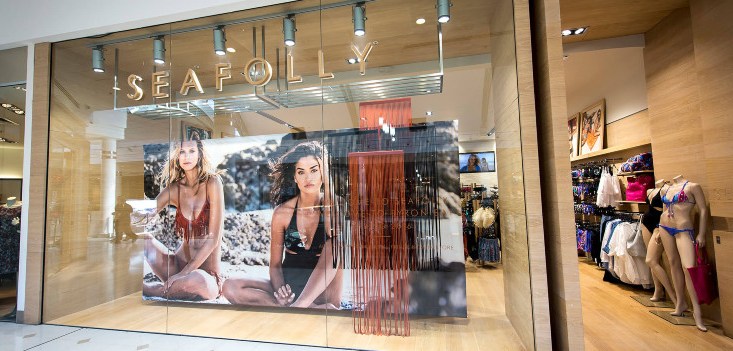
A Seafolly store.
Seafolly Group will close 15 of its Sunburn branded stores as administrators for the collapsed swimwear retailer seek to slim down the business for sale.
More than 50 potential local and international buyers are circling the company, which collapsed into voluntary administration on Monday.
A total of 25 Seafolly stores in Australia will remain open for now as administrators kick off a fire sale to clear stock.
The business had 44 stores in Australia when it fell into administration, so by implication four Sunburn locations will also continue trading.
The company also has 12 stores overseas, but a spokesperson for the administrators confirmed none of the company’s Seafolly-branded locations are slated for closure.
Administrator Scott Langdon from KordaMentha said the store closures will cut costs.
“The slimming down of the cost structure and closure of unprofitable stores will make the Seafolly business much more attractive to buyers,” he said in a statement.
The Australian Financial Review reported earlier this week that several buyers who missed out in a recent return-to-sender Tigerlily administration are posturing to make bids for Seafolly.
Administrators confirmed on Friday a number of local and international suitors have approached them about the business, with information memorandums to be circulated next Monday.
Indicative bids will be due on July 12 as administrators prepare for a second meeting of creditors in early August.
The Sunburn stores to close are located in: Erina, Werribee, Cronulla, Springfield, Big Swim (Bondi), Marina Mirage, Shell Harbour, Mosman, Pacific Fair, Chermside, Joondalup, Macquarie, Manly and Top Ryde.
Retail finds growth, but clothing in trouble
Australia’s mix of distressed retail companies has expanded in the wake of the COVID-19 pandemic, with the likes of T.M. Lewin, PAS Group and G-Star Raw also collapsing recently.
Other retailers have simply closed their physical stores and begun re-negotiating with landlords while support measures, such as JobKeeper wage subsidies and rent deferrals, remain on the table.
But there are fears a wave of insolvency activity will follow September 27, when this support expires and thousands of businesses begin largely fending for themselves.
While there’s been no shortage of high profile insolvency and restructuring activity during the pandemic, businesses are not currently required to respond to creditor requests as quickly as is usually the case.
When those insolvency protections expire in September, we may see a pick-up in the number of distressed retail businesses with creditors knocking on their doors.
Unfortunately, while annual sales growth returned to the retail sector as a whole in May (up 5.7%), clothing, footwear and personal accessories remained down by 19.4%.
That’s an improvement on the unprecedented 64.5% annual fall in April, but with almost one in every five dollars missing from this time last year, there’s concern about how retailers will survive through to the Spring/Summer season in quarter three.
NOW READ: Seafolly has collapsed into voluntary administration: 44 stores, 120 jobs at risk
NOW READ: T.M. Lewin Australia collapses into administration, as UK-based parent restructures


COMMENTS
SmartCompany is committed to hosting lively discussions. Help us keep the conversation useful, interesting and welcoming. We aim to publish comments quickly in the interest of promoting robust conversation, but we’re a small team and we deploy filters to protect against legal risk. Occasionally your comment may be held up while it is being reviewed, but we’re working as fast as we can to keep the conversation rolling.
The SmartCompany comment section is members-only content. Please subscribe to leave a comment.
The SmartCompany comment section is members-only content. Please login to leave a comment.